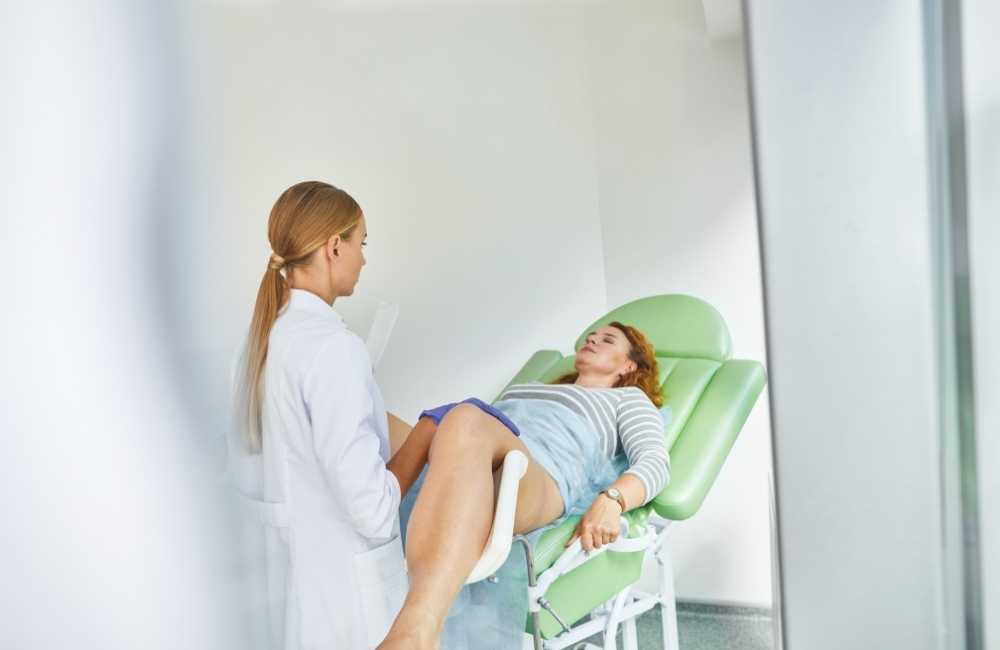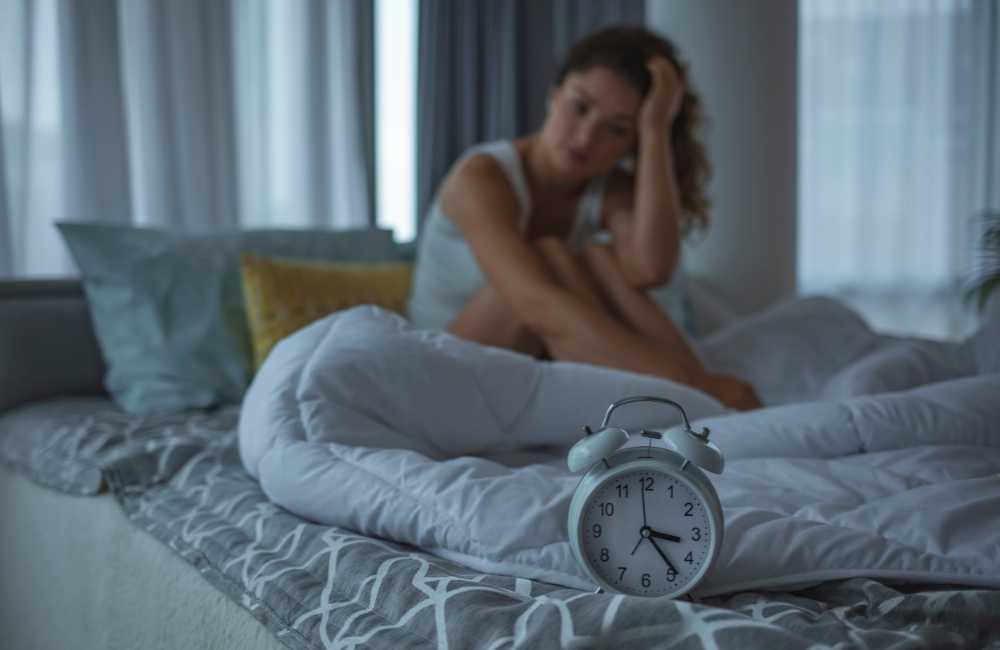Sexual interest arousal disorder is a type of sexual dysfunction in females that is a lack or decreased interest in sexual activity and sexual thoughts.
It could also be a lack of response to sexual stimulation – mental or emotional and or physical. This disorder is a combination of the following.
- Hypoactive sexual desire disorder (HSDD) – is defined as a persistent or recurrent deficiency or absence of sexual desire or receptivity to sexual activity. Here, decreased desire is a concern.
- Sexual arousal disorder: Difficulty becoming aroused.
It’s not unusual for a woman to lose interest in sex at some stage, or experience difficulty climaxing to orgasm. It doesn’t mean anything is wrong, as a range of physical and psychological factors can play a part in your feelings towards sexual intercourse.
In contrast to a temporary reduction in sexual interest, sexual interest/arousal disorder causes interest decrease or absence for a much longer period than would be expected for a woman’s age and the length of the sexual relationship.
Lack of sexual interest and inability to be sexually aroused are considered a disorder only if they distress the woman and if interest is absent throughout the sexual experience.
Usually, when women are sexually stimulated, they feel sexually excited mentally and emotionally. Certain physical changes also occur e.g.
- The vagina releases secretions that provide lubrication (causing wetness).
- Blood flow to the genitals increases, causing the tissues around the vaginal opening (labia) and the clitoris to swell.
- The breasts swell slightly and may tingle.
In sexual interest/arousal disorder, all or some of these responses are absent or significantly decreased.
What is Libido?
Libido is our desire or appetite for sex and in being sexual rather than the drive for sex. It has three interrelated components namely.
- Sex drive
Sex drive is a term that describes the biological component of sexual desire and this manifests as thoughts and fantasies, erotic attraction to others, seeking out sexual activity, or genital tingling or sensitivity. It varies a lot from woman to woman and often varies from day to day based on a woman’s daily activities, stress, and health.
- Beliefs, values, and expectations about sexual activity
Your natural drive may be tempered by your attitudes toward sex, which are shaped by your culture, your religious beliefs, your family, your peers, and media influences. The more positive your attitudes are about sex, the greater your desire to be sexual.
- Motivation.
This component involves your willingness to behave sexually at a given time and with a given partner. Because it is driven by emotional and interpersonal factors, motivation is the most complex component of desire—and is increasingly recognized by experts as perhaps the most important. Generally speaking, a caring relationship is often required for most women to experience the desire
2 Types of Sexual Desire Have Been Identified

- Spontaneous
This desire arises spontaneously. It’s a sudden desire for sex that just washes over you seemingly out of nowhere. Here, there is a desire for sex, you seek it and then you get aroused.
Most women don’t feel this type of desire much after their teens and 20s while some others don’t feel spontaneous desire at all.
- Responsive
This kind of desire, as the name suggests, arises in response to some outside stimulus. It happens when you get turned on while you read an erotic story or watch a sexy movie or feel the touch of someone you’re sexually attracted to. In this one, arousal comes first and then the desire for sex and going after it.
Low libido is defined personally. When your desire for sex is lower than you would like it to be or lower than it was in the past and that decline in desire is bothersome for you. It has to be bothersome to you for it to be a problem.
Causes of Sexual Interest Arousal Disorder
Some women who think they have a low sexual desire just don’t have the spontaneous desire they had in their teens and 20s, but they still have responsive desire. However, causes of low sex interest are complex but scientific studies have shown the followings:
-
Physical causes of sexual interest arousal disorder
-
- Conception and breastfeeding
An increase in prolactin stimulates milk production after childbirth. This increase can result in reduced libido when breastfeeding.
-
- Drugs
- Antidepressant drugs.
- Alcohol.
- Chemotherapy for female cancers
- Arousal difficulties
- Menopause and associated symptoms.
- Vaginal dryness.
- Pain during penetration.
- Painful sex (dyspareunia).
- Vaginal bleeding associated with sexual activity.
- Reduced sexual responsiveness, and impaired sexual arousal.
- Surgery
- Drugs
Removal of both ovaries can lead to abrupt menopause
-
- Life style
Rest, relaxation, recreation and suitable exercise can all have positive effects on your libido.
-
- Medical conditions
Medical conditions that can influence libido include:
-
-
- Endometriosis
- Pelvic inflammatory disease
- Prolapse
- Haemorrhoids
- Anaemia
- Kidney failure
- Infections (such as thrush or urinary tract)
- Hypothyroidism (underactive thyroid gland)
- Chronic pain.
- Environment
-
The surroundings: The setting may not be erotic, private, or safe enough for uninhibited sexual expression.
-
Psychological causes of sexual interest arousal disorder
-
- Stressors.
- Financial hardship.
- Career-related pressures.
- Family obligations.
- Bereavement.
- Divorce.
- Retirement.
- Personal Illness.
- Partner’s Illness.
- Anxiety or depression
- Stressors.
Depression affects every aspect of one’s life including sex. Low self-esteem, feeling of hopelessness and physical fatigue can lower one’s libido.
-
- Body shape
If a woman feels that her body is unattractive, it leads to lower sexual. Self-esteem also often leads to avoidance of sexual activity.
-
Relationship factors
-
- Conflicts or partners’ sexual dysfunction (e.g. erectile dysfunction and premature ejaculation in the male partner)
- The pattern of avoiding or ignoring her partner when he/she is likely to initiate sex.
- Lack of communication between partners, and other related problems.
- Mismatched sex dives (Sex drive discrepancy SDD).
-
Unwanted sexual contact
-
- Past experiences of sex including abuse and trauma.
-
Cultural, social and religious values /morals
-
- Women raised in highly restrictive cultures and strict religions tend to have reduced sexual interest.
- Feelings of resentment, shame or guilt about sex.
Diagnosis of Sexual Interest Arousal Disorder
The diagnosis of sexual interest/arousal disorder on:
- Interview with the woman’s partner separately and later together.
- The woman’s history and description of the problem and on criteria from the Diagnostic and Statistical Manual of Mental Disorders, Fifth Edition (DSM-5), published by the American Psychiatric Association.
These criteria require a lack of or decrease in at least three of the following:
-
- Interest in sexual activity.
- Initiation of sexual activity and responsiveness to a partner’s initiation.
- Excitement or pleasure during almost all-sexual activity.
- Sexual or erotic fantasies or thoughts.
- Physical sensations in the genital area or elsewhere during sexual activity.
- Interest or arousal in response to sexual stimuli—written, spoken, or visual.
- A pelvic examination is done if penetration during sexual activity causes pain. –This is done to look for abnormalities in the external and internal genital organs, including the vagina and cervix. Doctors can often identify where the pain is coming from.

These symptoms must have been present for at least 6 months and must cause significant distress in the woman.
Treatment for Sexual Interest Arousal Disorder
Treatment of sexual interest /arousal disorder is usually a multidisciplinary team approach namely (the sex counsellors, pain specialists, psychotherapists, and physical therapists).
-
General measures
-
- Education about sexual anatomy and function (e.g., the need to stimulate other areas of the body before the clitoris, the requirement for emotional intimacy and trust) may help.
- Maintaining a healthy lifestyle by being physically active, eating a healthy diet, reducing your alcohol intake etc.
- Finding ways to reduce stress and taking time out to relax regularly.
-
Psychologic therapies
-
- Cognitive-behavioural therapy may be required, although simple awareness of the importance of psychological factors may be sufficient for women to change patterns of thinking and behaviour. Also, mindfulness-based cognitive therapy (MBCT), typically used in small groups of women, can improve arousal, orgasm, and subsequent desire and motivation
-
Treatment of causative medical conditions
See listed above.
-
Hormone therapy for sexual interest arousal disorder
-
- Testosterone treatment with and without concurrent estrogen resulted in improved sexual function in women with decreased sexual interest/arousal. The primary outcome was increased sexual desire, but arousal and orgasmic response also improved.
However, little is known about the long-term safety and efficacy of testosterone therapy.
If it is prescribed, a full explanation of conflicting efficacy data and lack of long-term safety data is essential, as is close monitoring for adverse effects such as acne, hirsutism, and virilization. In addition, the patient should have normal lipids and liver test results before testosterone therapy is started.
-
- Intravaginal prasterone (a preparation of dehydroepiandrosterone, or DHEA) may relieve vaginal dryness and dyspareunia due to genitourinary syndrome of menopause, which can interfere with sexual interest and arousal. Prasterone may also improve genital sensitivity and orgasm. Systemic DHEA is ineffective. No form of DHEA has been studied in premenopausal women.
- Systemic estrogen is not indicated for the treatment of sexual arousal/interest disorder. However, it may be used to treat menopausal symptoms; it may improve mood, help maintain skin and genital sexual sensitivity and vaginal lubrication, and decrease concomitant vasomotor symptoms (e.g., hot flushes). These benefits may enhance sexual interest and arousal.
Transdermal preparations of estrogen are usually preferred after menopause.
Conclusion
Many women experience the occasional sexual issue. But if it bothers you or becomes a frequent problem, it’s time to get help. Talk to your healthcare provider about evaluation and treatment.
Sexual dysfunction can be a frustrating, challenging condition for many women. But it’s nothing you should feel ashamed of or embarrassed about. Talking openly and honestly with your partner and your healthcare provider can help get to the root of the problem. Therapies are available for the physical and psychological causes of sexual dysfunction. Most women can enjoy healthy, pleasurable sex with the right treatments.

